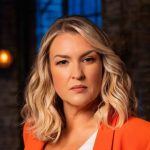There is no such thing as a national costume in this country, but some clothes help people visualize what it means to be that innovative: American. She is a difficult character to understand. Although popular culture equates it with blond and blue eyes, Americans are not defined by race or ethnicity. They are not defined by their family tree. But nonetheless, we stubbornly try to model an American ideal in human form — the embodiment of all our notions of our national character, which include the glories of boot progress, the power of unmistakable optimism, and the romance with a gentle focus on our rebels. past.
No other designer has been more important than Ralph Lauren in helping us paint a picture of those aspirations and aspirations. Since he founded his company in 1967 on a single product that embraces tradition and possibilities – a tie a little wider than the norm – he’s been making apparel deeply rooted in the idea of heritage even as they aim to put a glossy, radiant shine into contemporary times. He drew his inspiration from the beautifully ramshackle country cottages of the Atlantic coast and the wide open spaces of the West, as well as the gods of Wall Street, a descendant of the country club and senior men on campus.
For over 50 years, Lauren has been writing an anecdote about what it means to be American. Now he has made an important adjustment. It is not so much a correction as a clarification.
His new advertising campaign, featuring photographs, picture books and a 30-minute film, announced a partnership with Morehouse College and Spelman College, two institutions rich in tradition and prestige. They are two of Historically, the black colleges and universities that educated black students during segregation and continue to do so today as predominantly white institutions typically treat black history as a specialized topic to be discussed in an individual safety section rather than a discipline rooted in the American story. The story of blackness is a part of our collective history that can cause discomfort and because of that it is especially under attack these days.
The clothing in this license agreement with the two schools is depicted mostly on students, alumni, and faculty – against the backdrop of the two adjacent campuses in Atlanta. The collection is inspired by photographs from the school archives of students dating back to the 1920s as they gather on the patio, in the classroom, or on the playground. Comprising about 100 items, the hoodie favored by Morehouse men includes Spelman’s signature white cotton garment – which remains a tradition, along with pearls – and the turtlenecks and sweaters that are staples of the overall vernacular. It would be tempting to call these looks Ivy League style. But that’s only because those who have the ability to Legalizing Elements of American Achievement did not take into account black students. Princeton and Harvard predated Morehouse’s existence, but what was worn on campus in the North in the 1950s, when They already know Bag suits, Oxford shirts, and striped laces were also worn on the Morehouse campus, founded in 1867.
Lauren turned his gaze to take in a new scene that had been there all along but simply hadn’t seen. Until, one day in 2020, he suddenly did.
In the wake of The murder of George FloydIn the midst of the racial justice protests sweeping across the country, at a time when the people were deeply divided, the company’s 23,000 employees came together in nearly clusters for conversations meant to be open and honest about the unrest surrounding them and the questions that raised. In one, founder James Jeter asked a simple question: “How are you?”
He said: Great. Lauren recalled during an interview: “But you know, I’m not sure that’s going to be my future.” last week. I said: What do you mean by that? And he said, “Well, you know, I don’t know if that’s the way. Is this a company that’s going to be all white? … What’s the story with this company?”
Basically, Jeter wanted to know: “Who are we?”
“When he said that to me, I was kind of surprised and said, ‘James, there’s a future for you here,'” Lauren said. “Maybe this collaboration with Morehouse and Spelman is proof of that.”
Jeter is a design director at a New York-based firm who has spent his entire career in the brand, starting as a sleek black teenager obsessed with the company’s aesthetics and working on the sales floor of a Rugby Ralph Lauren store in the Georgetown neighborhood of Washington. Jeter climbed the corporate ladder from apprentice to design assistant to lead designer. He’s also a Morehouse guy from the class of 2013. And he’s educating his boss about what that means.
“I didn’t know anything About it,” said Lauren, including HBCU Aesthetics, Black “Divine Nine” Fraternities and Sororities, and the Black Collective Experience.
“James told me,” Lauren said. “He brought these books, because he went to Morehouse, and he said, ‘This is there.’ He got the sense that the world has always believed that the Ivy League [style] The people were only white. This exists. Total present taste levels are present. And we looked at some books and he showed me the school and I said, ‘That’s nice. Love her.’ “
“Something was missing” from the company’s point of view, Lauren said. “We are catching up. We are catching up [the country’s] the changes. And I want to be a part of that change. I believe in him, and I believe in him for our company.”
“I’m not a pioneer. I don’t try to take something that I don’t do [own]but I’ve always been very honest about what I believe in,” Lauren He said, “And I always try to do the right thing.”
Personal viewing has always been part of the story in Morehouse and Spelman, which focused on classical liberal arts education rather than vocational training. Students wore clothes to express personal dignity, as an expression of academic intentions and as an ode to respect before that word meant a certain political capitulation. Collaboration with Ralph Lauren “focuses on Morehouse in American Story. You look at those photos and you can see the connection with the same fashion sensibilities that defined Ralph Lauren. They were in Morehouse before Ralph Lauren was born,” said David Thomas, president of Morehouse. “If we really think about Morehouse in the period of those pictures, if we didn’t have segregation, many of these guys would have gone to the best colleges in this country. Many of them would have ended up in Ivy League colleges.”
The two photos are reminders of the ways this country has failed to deliver on its promise but also a celebration of how black Americans have succeeded despite those fundamental flaws. Thomas, speaking slowly and deliberately, repeated something he said years ago in a speech on campus that still resonates: “Morehouse is an idea in the same way America is an idea, which is that in this country you can create a black male,” Thomas said. He is one of our cultural symbols. And Morehouse is a cultural symbol and, more importantly, an educational symbol of what a country can be.”
Sure, the images are advertising and marketing ads, but they also sell an idea to consumers — and Americans in their shared history.
“We didn’t design this collection through the lens of HBCU to say that’s kind of the black way of dressing,” said Jeter, who oversaw the collaboration. “It’s really American style. We just changed the context and not really the clothes.”
Like so many companies, Ralph Lauren Corp. has faced diversity and inclusion. In the 1990s, the company first addressed the problem head-on after the store’s Hispanic and Black employees raised alarm about discrimination, about being sent to the store when important executives visited the store. The brand also has a rich history of diversity in its advertising dating back to the same time, when black models Tyson Pickford and Karen Alexander served as actual faces of the brand while many other fashion houses were carelessly showing off their white cast.
In the wake of racial justice protests nearly two years ago, the company signed a Black In Fashion Council, which aims to independently increase diversity on Seventh Avenue Pledge To build a leadership team made up of 10 percent black people and 20 percent people of color by 2023. However, around the same time, the company was given the task of using the Greek letters of a historically black brotherhood to decorate a pair of pants without the organization’s permission. The path towards equality and cultural sensitivity has many ramifications.
“The beauty of what Ralph Lauren did for us: they made us a part of this project,” said Thomas of Morehouse. “They didn’t come in and fit the culturally inspiring images of black people and then go ahead and do something with them.”
There are those who might look at this set and see it as an anachronism at a time when he wears leggings and leggings as many people would like. There is a polish to these images that may feel costly at a time when improvisation is being evaluated. The entire project is a risk in an age where social media censors are always on the lookout for bugs. However, when Dara Douglas, who oversees the Ralph Lauren Library A Spelman graduate, speaking on the set, her voice vibrates with emotion.
“I know how the other women who graduated from Spelman, the other men who graduated from Morehouse, all the people who attended HBCU, there is a lot of respect and appreciation for the Ralph Lauren brand,” Douglas said. “For us to see this culture and see this society look back at them and show them themselves – that would be massive. It’s overwhelming.”
This collaboration was approved in part by Marie Schmidt-Campbell, Spielman’s principal, because the project relied on archival photos from the school and was a sort of contemporary version of a series of photographs of black men and women at home, school, and work commissioned by W.E.B. Dubois at the beginning of the 20th century.
“I thought he brought up an aspect of our history and heritage that we don’t talk about and don’t see much of on the public stage,” Campbell said. It was no small feat in Campbell’s estimation that this was also a business deal that could benefit the school’s bottom line and that the project featured a creative black team including Douglas, a Spelman member.
Lauren, 82, indicated he wasn’t keen on talking about the group, but was convinced by his crew. Not because he’s not proud of him and proud of the work that both Jeter and Douglas have done. But because these are treacherous times to stumble, course correct, and try. Capitalism provides man with almost everything except the benefit of the doubt.
“I am not worried about my inheritance. I have three children and grandchildren and I want them to be happy, do what they do and not worry about me,” he said. “I do what I love to do. I have good days and bad days. On good days you feel good about yourself and on bad days you don’t feel good about yourself.
“We all make mistakes and things,” he said. But we correct it, learn about it, learn what we did not know. thats good.”






